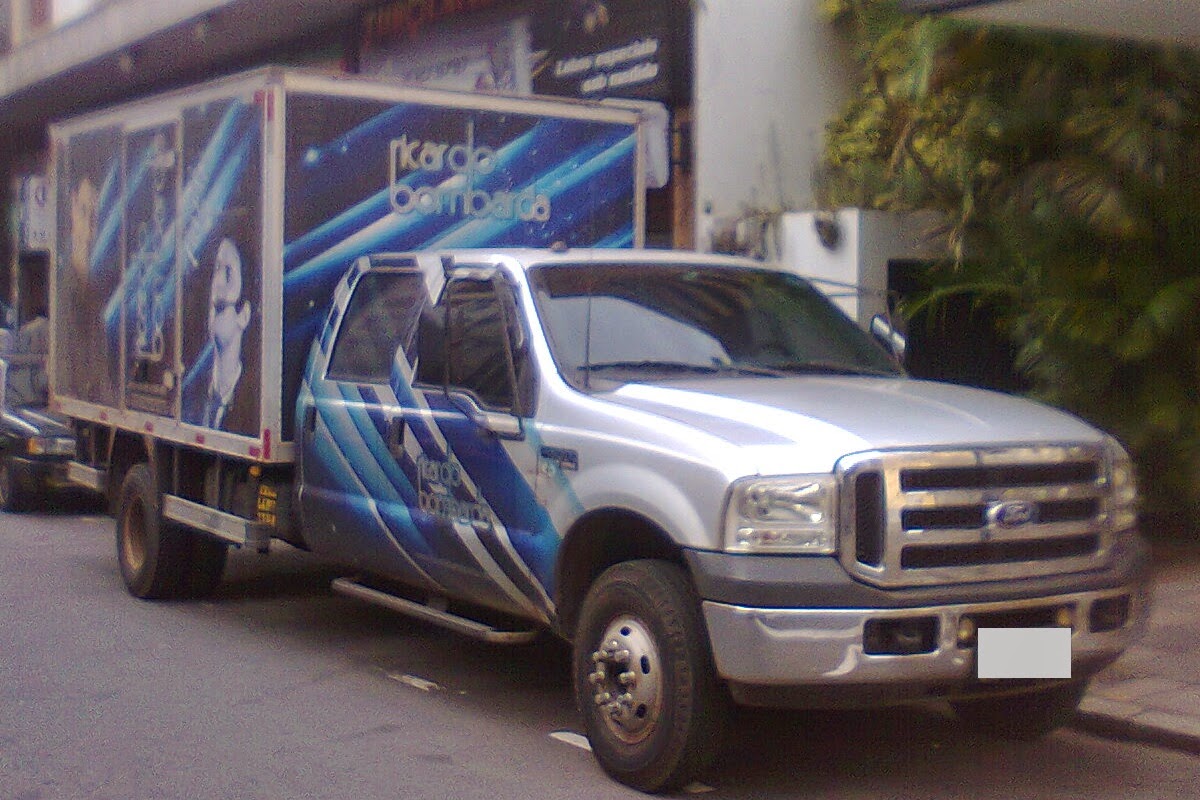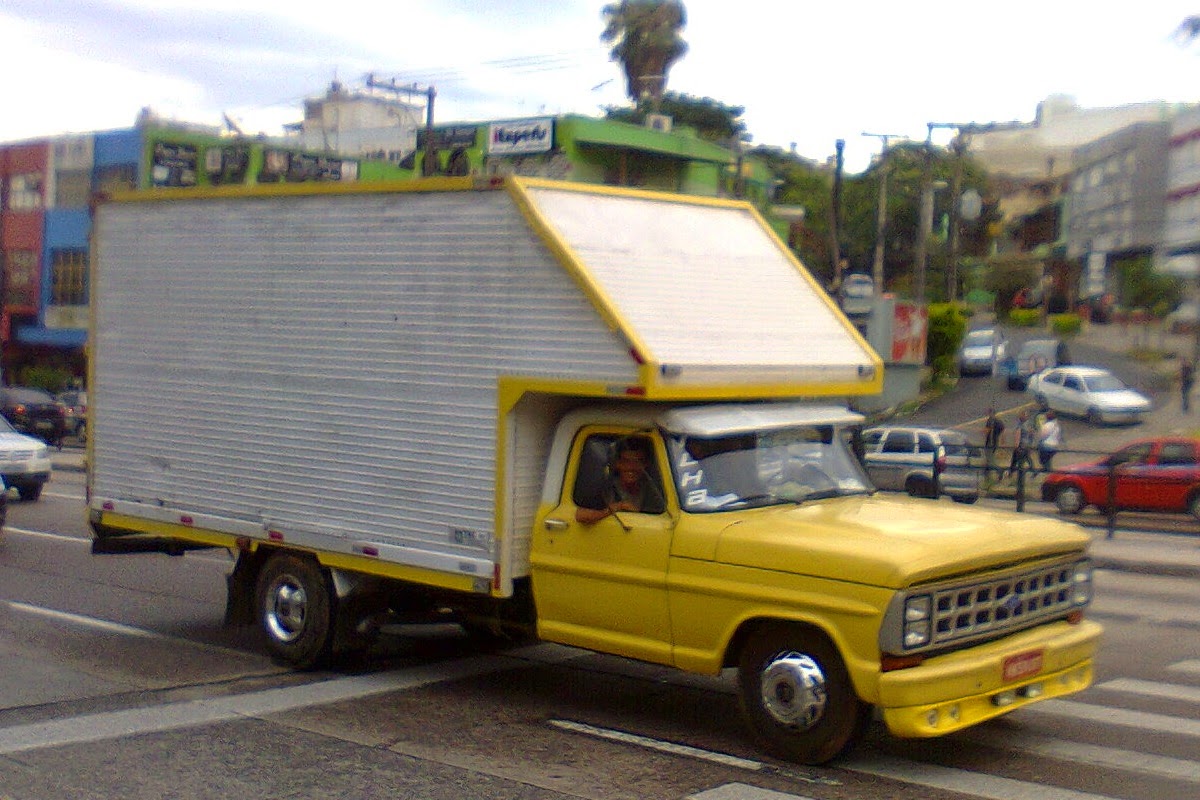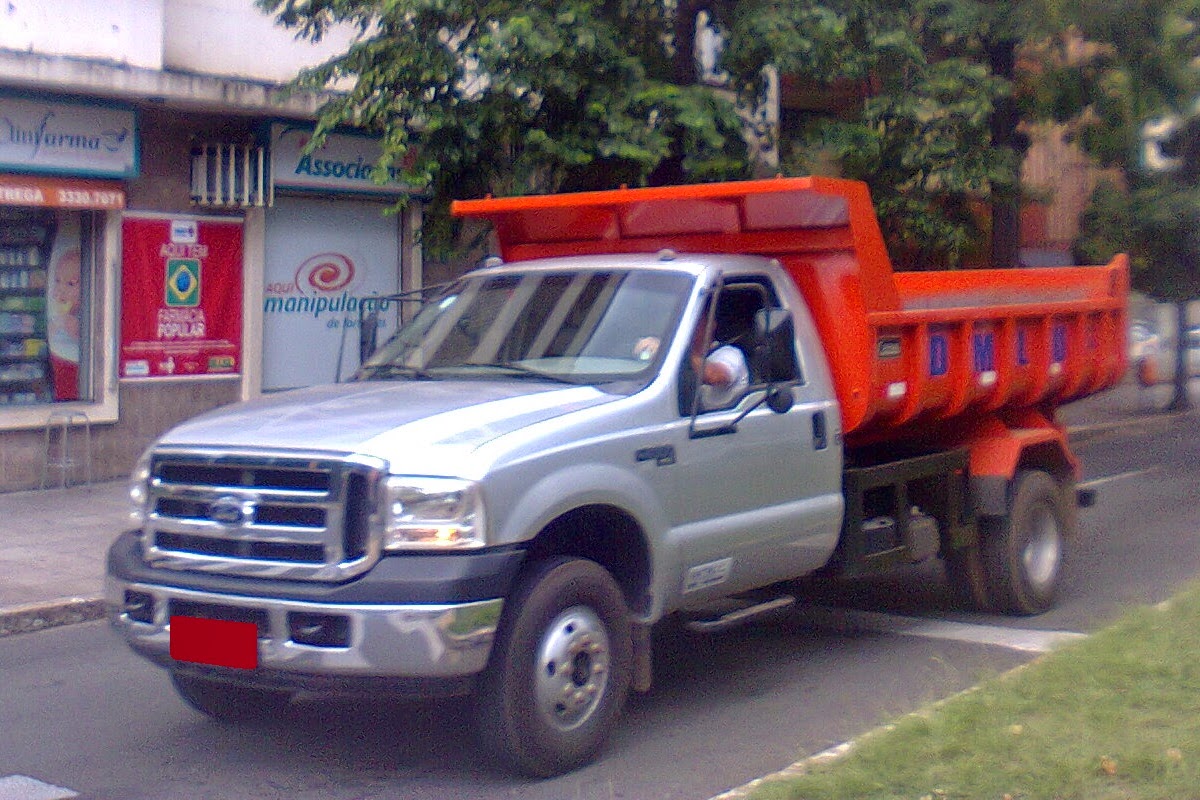Actually, the F-4000 (the yellow one above might be from the 70's due to the white cabin roof, but got updated with a front clip from the 80's) has been fitted exclusively with a 4-cylinder Diesel since the 70's, and the F-1000 (a derivative of the OBS F-250 with the short bed of the F-150) had a high-speed turbodiesel with a displacement below 3-litre available between '97 and '98 for its 2WD variant, but the F-350 and F-4000 were never factory-fitted with any engine under 3.9-litre such as the Cummins B3.9 (also often referred to as "4BT") which became the sole powerplant for both the F-350 and F-4000 from late '98 to late 2011 when they were phased out because somebody at Ford South American Operations (FSAO) deemed it wouldn't be cost-effective to upgrade them with an electronically-governed engine compliant to Euro-5 emission standards, and trying to push the traditional buyers of the Brazilian F-Series/SuperDuty to the Ford Transit semi-bonnetted vans and the Ford Cargo forward-control truck sounded more profitable. But it was proved wrong and, after losing some market share for Volkswagen, Iveco and even to Hyundai and a few Chinese manufacturers, Ford had to reintroduce the F-350 and F-4000 (pictured below is a '05-'11 F-4000, with a mechanically-governed B3.9 detuned to 120hp in order to get compliant to the Euro-3 emission standards).
In spite of the controversies regarding the new engine, the SuperDuty already recovered its sales performance right after its reintroduction. In a contrast to the American market, where conventional bonnetted trucks remain the most popular configuration, nowadays forward-control trucks are prevalent in Brazil, so the cabin is the strongest sales argument for the F-350 and the F-4000 against its closest competition in the public utility and rural segments. The basic concept of the SuperDuty, less specialized than the current generation of Class 3 and Class 4 cab-forward trucks which are more focused on urban delivery, makes it more favorable for a wide range of operations not just in city and highway but also in rougher terrain.
While it could be deemed kinda obvious to just fit the same engine and transmission from the smaller versions of the Ford Cargo into the F-350 and F-4000 (pictured above is a '98-'05 Euro-2 F-4000 with a Cummins B3.9 rated at 141hp and an aftermarket supplementary cabin), a different engine was chosen, still supplied from Cummins, but for everyone's surprise it was the ISF2.8 instead of the ISBe4.5 currently used in some versions of the Ford Cargo ranging from Class 5 to 7, with its lower cost pointed by a former FSAO engineer as the main factor leading to this choice. It may seem shocking at first, but high-speed turbodiesels in the 2.8L displacement range are actually not so unusual in Asian trucks with a gross vehicle weight rating comparable to the F-4000, such as many Chinese imitations of the Isuzu NPR powered by some copy of the Isuzu 4JB1-TC engine.
OK, with an engine that would predictably develop a lower torque, altough it would do so at a higher RPM, the right gearing selection becomes a major concern in order to retain a reasonable performance. Gears with a numerically higher rating are, actually, lower, because they mean how many input rotations would be turned into output rotations, such as from the engine to the transmission and from the transmission to the rear-end. A higher engine speed compensates for a lower final gear ratio, which is applied to multiply the torque, so it's viable to keep the performance in pair with a lower-speed engine at a higher displacement range coupled to a transmission setup with a higher final gear.
At a first look, it might seem that Ford went too far in the downsizing with the SuperDuty for the Brazilian and Argentinian markets, but actually it does seem to match the specific requirements of the regional market, where the purchase cost is a kinda critical issue, and a Diesel engine must be the standard instead of a premium feature. On a sidenote, unlike its American equivalents which are nowadays available only with an automatic transmission, the Brazilian SuperDuty is factory-fitted exclusively with a manual, not just because of its lower cost but also due to its perceived lower impact on fuel-efficiency and easier repairability.









Come on dude, just because a Jap gets a lawnmower engine in a tiny Isuzu doesn't mean they're doing it right putting it into a full-size Ford. I can understand the reasoning behind a 4cyl turbodiesel becoming the engine of choice for them, but not this one.
ReplyDeleteBrazilian market, and by extension some neighboring markets in the Mercosur, have different needs. The typical SuperDuty customer cares more about a conventional cabin than what's under the bonnet, and a turbodiesel V8 is deemed too expensive and complex while a gasser has a much higher operating cost (unless converted to CNG which is not so easily available in rural areas).
DeleteMany commercial operators would be getting one in a heartbeat if they released a 4-banger turbodiesel into a full-size here in America, believe me.
ReplyDeleteI agree with you, but I still believe a bigger engine such as the ISBe4.5 or the ISF3.8 would be more suitable to the American market, and due to the parts commonality with the ISB6.7 currently fitted to the Ram trucks the 4.5 doesn't seem any hard to federalize.
DeleteI could live with such a small motor into an F-250 if Ford would ever dare to bring them back to South Africa. At least it's a Cummins, so the aftersales support might be better than the MWM.
ReplyDeleteSure it's a bit shocking to figure out that Ford went so far in the downsizing route, but the world doesn't turn around the rednecks with their fancy ego-haulers. Many buyers on the market for a simple workhorse would be glad to get one, but Ford doesn't even offer a manual transmission for the full-sizes anymore.
ReplyDeleteGotta confess, I got shocked when I figured out that Ford would fit the F-350 and the F-4000, but now it doesn't seem so pointless at all.
DeleteIf that engine would allow it to be slotted in a more favorable tax class in export markets, actually seems to make sense.
ReplyDeleteNice response in return of this matter with solid arguments and describing the whole thing concerning that.
ReplyDeletemy webpage; lasertest